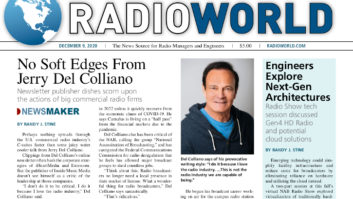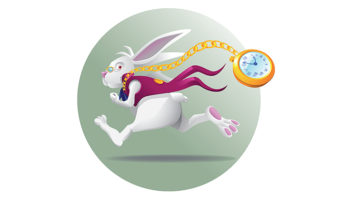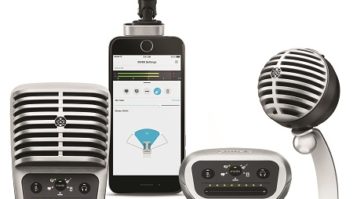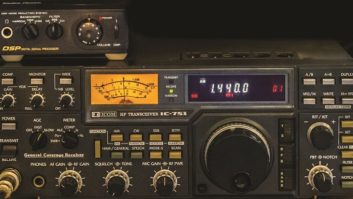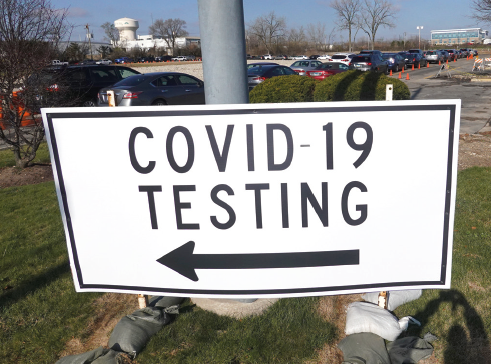
Millions of jobs lost. Close to 300,000 perished. Over 16 million sick.
You know the facts because you’re living them. One thing most of us can agree on is that the science of this COVID-19 thing hasn’t changed and it remains highly contagious.
Being isolated for so long, it’s human nature that we are all past ready to return to normal activity. What’s constantly in play is the public’s attitude.
A friend of mine in Florida recently declared that she was “so done with COVID” and took a road trip to Key West with three friends, sharing a hotel room and reveling in the food and atmosphere of their favorite hot spots.
In touch with listeners
Understanding attitudes is the tricky part of being on-air during the virus. It’s the one discussion point your local team needs to update constantly so you can properly adjust what you’re doing on-air, online and with your social channels.
Nobody knows when this nightmare will end. Even once the vaccine deployment ramps up, it will be months before all public activity can safely resume in a normal way.
It’s super easy to be unintentionally tone-deaf about this tragedy, but doing so can damage your personalities and your brand, perhaps permanently.
In the beginning of the outbreak, from his yacht in the Caribbean, recording industry billionaire David Geffen posted a picture of a beautiful sunset for his 80,000+ Instagram followers. Seemed innocent enough, even with the caption that said , Sunset last night… Isolated in the Grenadines avoiding the virus. I hope everyone is safe.”
He got roasted first by his followers and then by the media. This is a guy who’s been involved in raising millions of dollars for clinics, charities for the homeless, and even has a school of medicine named after him in California. None of that matters to the people who perceive him as a privileged jerk.
They’re thinking, Yeah, you’re isolated all right … from the risk and uncertainty the rest of us face every day!
The lesson is that we can’t let our guard down as the seasons change and we need to be ultra-aware of what we are saying to our listeners.
Community-mindedness
You’ve had to be living in a cave not to know that the act of staying home when possible, wearing a mas, and social distancing — and the extent to which any should be mandated or voluntary — has become a political sore spot. Therefore, unless your product is a specifically conservative or liberal talk format, it’s risky to take a position.
A transparent way to talk about masks is to have the voices of your listeners express their opinion. Stay calm and have your best tension-easing methods of diplomacy ready to roll.
As the recent election shows, the country is split on so many issues that your personalities or station will inevitably alienate many listeners if you go all-in on one point of view.
However, because the relentless contagion of this devastating virus hasn’t changed, all stations should encourage sick people to stay home, to be careful around the elderly or others of compromised health, and to remember that we are all in this together.
There is one scientifically proven fact that your station staff could highlight: wearing a cloth mask (even a bandanna over nose and mouth) may not do much to protect yourself, but it is enormously helpful in protecting others.
It is a community-minded action, and local radio culture is, or should be, all about community. Imparting this information via PSA or to a genuinely interested caller is an important public service.
That said, if your community is overwhelmingly in favor of full-time masks while in public, you could also give out or sell masks or hand sanitizer with your logo to benefit a charity, as some stations have been doing for months now.
Offer resources
Most importantly, every station in America should continue doing their best to generate funds, food and supplies for those in need.
With unprecedented unemployment, we must create more avenues to offer support. This may be more-frequent PSAs urging both monetary and non-perishable donations to food banks; airing announcements about volunteer opportunities; and supporting loans for those in need.

If you haven’t done it already, I urge you also to create a resource page on your website with links to such things as local employment search ideas and help in navigating loss of income; food security advice and dollar-smart recipes; articles on coping with disruption of family life and other relationships; and, of course, how to stay safe and healthy in the face of COVID-19. Enlist a member of your staff who is good at research to compile these resources and review it with your talent so they’re in the loop of what’s available to their listeners on the website and what’s being constantly updated.
During times of crisis, people have long turned to radio personalities as virtual friends. And just as a friend is genuinely warm and approachable, it’s more important than ever that talent express a desire to share in their listeners’ lives.
Most of this comes in the form of morning shows; many who expanded hours in April continue to stay on for longer, while others have already scaled back. The situation is so fluid that if your area goes into lockdown again, you should take a hard look at your schedule.
There was a piece of optimistic news in a Radio Advertising Bureau article in October from Pierre Bouvard, chief insights officer at Cumulus: “The growth of workplace commuting combined with the return of children to school has caused time spent in the car to surge. This is good news for both the outdoor advertising and U.S. AM/FM radio industries. From May to October, Nielsen finds daily time spent in the car has grown +81% from 36 minutes in May to 65 minutes in October. Among heavy AM/FM radio listeners, daily time spent in the car has doubled from an hour and six minutes a day to two hours and 11 minutes.”
Even if this goes sideways due to renewed school closings and new restrictions, the beautiful part is that we can rest assured that in-car will come roaring back.
Many of us have more questions. At the top of my list: Do you continue to respond to the times in your local community?
Reach the author at [email protected]. Read more great promotion, content and management articles from Mark Lapidus at www.radioworld.com/columns-and-views/promo-power.
Comment on this or any article to [email protected] with “Letter to the Editor” in the subject line.


